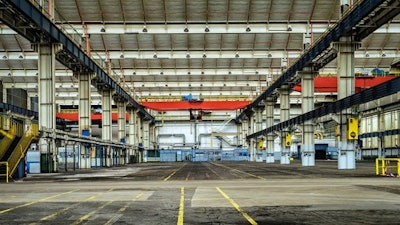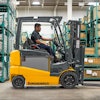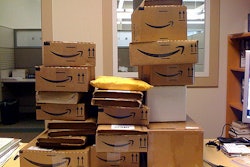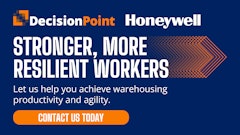
Reverse logistics is, of necessity, an information technology-intensive business, says Steve Manning, vice president at Milpitas, Calif.-based electronics manufacturing services (EMS) provider Solectron and general manager of its Solectron Global Services unit. The reason? "It's all about the data," Manning says.
Reverse Logistics Rising
As the Reverse Logistics Association notes, a variety of names have been applied to reverse logistics, including aftermarket logistics, aftermarket supply chain and the reverse supply chain. Formally, the Reverse Logistics Executive Council defines its namesake process as "a specialized segment of logistics focusing on the movement and management of products and resources after the sale and after delivery to the customer."
Reverse logistics has always been a concern for manufacturers and retailers, but until recently this process has gotten little respect in the C-level suites. "It's been an afterthought for a long time," says Greg Aimi, a research director focusing on supply chain issues at Boston-based technology consultancy AMR Research. David Morgan, CEO and president of DW Morgan Co., a Pleasanton, Calif.-based logistics services provider and supply network consultancy, puts it even more bluntly: "Reverse logistics, for many years, has been looked upon as a necessary evil." Companies were more focused on the forward supply chain, pushing goods through the pipeline to meet demand, and leaving returns to the folks at the store and warehouse level.
But more recently reverse logistics has begun to lose its "necessary evil" status, and analysts and industry veterans point to several trends that have increased the importance, and raised the profile, of the reverse logistics process. Phil Corwin, director of marketing with Atlanta's UPS Supply Chain Solutions, which offers a variety of reverse logistics services, says that as manufacturers and retailers have seen their margins become razor-thin, they have begun to recognize the significant costs associated with reverse logistics and to seek opportunities to reduce those expenses. "There are a significant number of touch points [in the reverse supply chain] that add up to a lot of cost. By not properly addressing the touch points, companies can negatively impact profitability, customer satisfaction and brand image," Corwin explains, "so companies are getting more sophisticated in their returns approach."
David Morgan suggests two additional drivers behind the newfound prominence of reverse logistics. First, he says, new environmental laws — such as the European Union's Restriction of Hazardous Substances (RoHS) and Waste Electrical and Electronic Equipment (WEEE) directives — are forcing companies to plan how they will retake possession of goods from end users at the end of a product's lifecycle. And second, with heightened focus on corporate governance and reporting thanks to the Sarbanes-Oxley legislation in the U.S. market and similar laws elsewhere, chief financial officers have become more concerned with tracking — and accounting for — inventory coming back into the company's supply network. "With Sarbanes-Oxley, they cannot get away from recognizing those returns and putting them on their books as inventory, so Sarbanes is forcing the reverse logistics world to articulate and capture those revenue numbers," Morgan says.
Unique Challenges
Managing the flow of goods through the forward-facing supply chain is hard enough, but keeping the reverse supply chain running smoothly presents a number of unique challenges. For instance, Tom Giovingo, executive vice president at Wauconda, Ill.-based Fidelitone, an outsourced logistics and supply chain services provider, suggests that the reverse supply chain is frequently much more labor-intensive than the forward supply chain. "If I bring in a pallet of 48 comforters, I deal with all 48 at once, and the cost is spread over all the comforters," Giovingo says, "but if a consumer brings a comforter back, all the same activity — the receiving, inspection and stock put away — now has to be performed for just one unit. You multiply that times a couple hundred or a couple thousand returns each day, and it really adds up."
Moreover, Ed Wodarski, chief strategist for the Service Parts Optimization group of Click Commerce, which in May acquired service parts optimization and reverse supply chain specialist Xelus, says that reverse logistics processes must often be customized around each product coming back into the supply chain. "Historically, in operations activities, companies have tried to create standardization and routine so that people can do the same thing over and over again at maximum efficiency," he says. "The problem is that not all return situations are the same. The process needs to be unique for each return based on the product, the demand for it, or its condition." Having all returned goods automatically sent back to a single clearinghouse might make sense operationally, but it would make more sense, Wodarski says, to triage a returned good in the field, say, at the store level, to determine whether it is even repairable before going through the trouble of shipping it back to the clearinghouse.
Hartmut Liebel, president of Jabil Global Services, the post-manufacturing services subsidiary of St. Petersburg, Fla.-based contract manufacturer Jabil Circuit, adds that reverse logistics requirements can force companies to make decisions about where to place facilities that are at odds with the priorities in their forward supply chains. Many original equipment manufacturers (OEMs) have moved manufacturing operations to low-cost countries to save on labor, for instance, but service facilities more frequently must be staged closer to the end user. "Ten years ago you might have had a manufacturer with a big location in Texas, where it could also easily perform the service work in the same facility, close to a local customer," Liebel says. "Now this manufacturing activity is performed in a low-cost area, probably offshore, but the customer is still in Texas, so you still need to have some service capability near that customer."
Track and Trace
As a result of factors like these, many companies have elected to either implement new solutions to better manage their reverse logistics process or, alternatively, to outsource their reverse logistics operations to service providers to take advantage of economies of scale and specialized expertise in planning reverse logistics operations. Solution providers in this space include such companies as Andlor Logistics Systems, offering software to help manufacturers manage product returns; Click Commerce, offering after-sales service management and service parts optimization solutions; eBoomerang, providing enterprise returns management applications; myRMA.net, providing a Web-based system for returns administration, reverse logistics and service center management; and Newgistics, specializing in returns management solutions; among others.
The outsourcing side has seen both vertical-specific and more general offerings. In the electronics world, for example, EMS providers such as Liebel's Jabil and Manning's Solectron (both of which use the legacy Xelus solution from Click Commerce for service parts management) — along with rival Flextronics, of Singapore — have been gearing up since the late 1990s to offer a range of reverse logistics services. Meanwhile more traditional logistics service providers such as DW Morgan, Fidelitone, GENCO and UPS Supply Chain Solutions have either been longtime players in this space (particularly around the retail sector) or also have been ramping up their reverse logistics offerings. (See the sidebar "Reverse Logistics Providers" at the end of this article for additional players in this space.)
Regardless of the approach that a company takes in addressing its reverse logistics challenge, a key goal of these initiatives is to improve visibility into the goods in motion throughout the reverse supply chain. That's where the data come in, and that's why information technology is playing such a critical role in the growth of reverse logistics. "It's a very heavily IT-driven process," says Liebel, "because it is critical for our customers — and for our customers' customers — to be able to track the status of products in the reverse logistics supply chain so that they can fulfill their own service obligations."
Beefing up Analytics
In addition to building up track-and-trace capabilities, enterprises are also looking to make better use of the data that they are generating out of their reverse logistics processes. "There's a wealth of data collected through a service event, but it has not been very well analyzed because of the fragmentation in the supply chain," explains Manning. Solectron has attacked this problem by extending its analytics for returns down to the level of the call center, collecting information on reported problems, substantiating those problems when goods come into a return site, analyzing failures for trends, and then pushing that information back to its customers' design staff to make corrections in future products. Or, when no failure is detected, as happens with anywhere from 15 to 50 percent of returned products in electronics, Solectron pushes the information back to the front end of the process, to the call center staff, so that the support technicians can deflect those returns.
On the retail side, where returns are a perennial issue (and account for 10 to 20 percent of goods sold, on average), Phil Corwin, with UPS Supply Chain Solutions, says that retailers are becoming more sophisticated about incorporating data on returns into their assessments of the value of any give customer. A big-spending customer with a low return rate is obviously more valuable as a client than a low-spender with frequent returns. "They're assessing your profitability as a customer and tailoring their returns policies on the spot," Corwin says.
Other companies are leveraging reverse logistics to better manage their inventories. Fidelitone, for example, will take in usable returns and hold the products or parts for a client for a set number of days — 60, 90, 120, depending on the product's lifecycle — and allow that client to fulfill orders out of Fidelitone's holding warehouse using that inventory rather than producing and shipping a new unit from the factory.
Looking ahead, Click Commerce's Wodarski believes that the future of reverse logistics lies in the convergence of the planning and execution sides of the process. "Because if you make execution decisions in reverse logistics without being mindful of what the goals and planning targets are, you're not going to make the best decisions," he says. "And conversely, if planners don't have visibility to where their assets are in the field and what their status is, they're going to make bad deployment, replenishment and resourcing decisions." What's it going to take to bring those two sides of the business together? High-level executive sponsorship, says Wodarski. "You need a sponsor who can take ownership of the whole process instead of letting the two factions just lob balls across the fence at each other," he says.
Sidebar
Reverse Logistics Providers
Companies offering specialized solutions and services for reverse logistics include:
Andlor Logistics Systems — www.andlor.com
Choice Logistics — www.choicelogistics.com
ClearOrbit — www.clearorbit.com
Click Commerce — www.clickcommerce.com
ComServe Network — www.comserve-network.com
eBoomerange — www.eboomerang.com
Flextronics — www.flextronics.com
Genco — www.genco.com
Integrated Warehousing Solutions — www.irmswms.com
Intellareturn — www.intellareturn.com
Manhattan Associations — www.manh.com
myRMA — www.myrma.net
Newgistics — www.newgistics.com
Pro Active Solutions — www.pro-activesolutions.net
R-Logic International Pte Ltd — www.rlogic.com.sg
Return Products Management — www.rpmrlm.com
Solectron Global — www.solectron.com
Supply-Chain Services Inc. — www.supply-chainservices.com
System Design Advantage LLC — www.sdalogistics.com
Teleplan International — www.teleplan.nl
UPS Supply Chain Solutions — www.ups-scs.com
USF Logistics — www.usfc.com
USI Inc. — www.usiinc.net
Additional Reverse Logistics Resources
Reverse Logistics Executive Council www.rlec.org
Reverse Logistics Association www.reverselogisticstrends.com


















